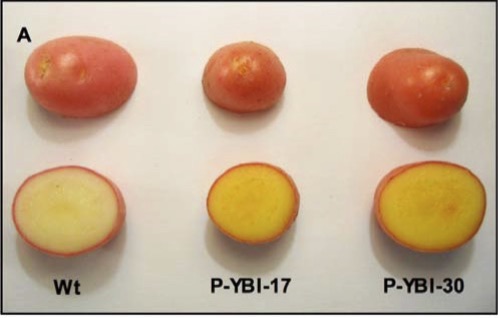Experimental tuber could cut disease in developing nations, study suggests
An experimental “golden” potato could hold the power to prevent disease and death in developing countries where residents rely heavily upon the starchy food for sustenance, new research suggests.
A serving of the yellow-orange lab-engineered potato has the potential to provide as much as 42 percent of a child’s recommended daily intake of vitamin A and 34 percent of a child’s recommended intake of vitamin E, according to a recent study co-led by researchers at The Ohio State University.
Women of reproductive age could get 15 percent of their recommended vitamin A and 17 percent of recommended vitamin E from that same 5.3 ounce (150 gram) serving, the researchers concluded.
The study appears in the journal PLOS ONE.
Potato is the fourth most widely consumed plant food by humans after rice, wheat and corn, according to the U.S. Department of Agriculture. It is a staple food in some Asian, African and South American countries where there is a high incidence of vitamin A and vitamin E deficiencies.


